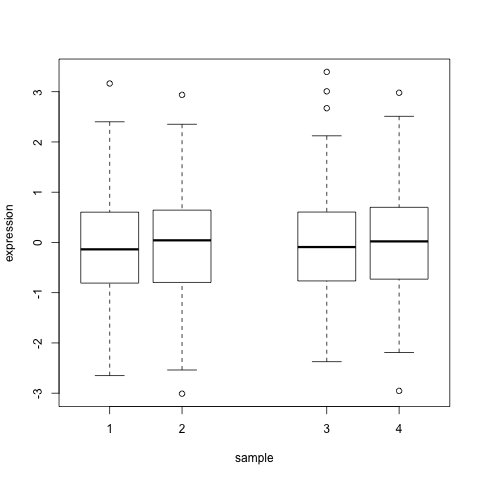
Most guidelines expect a difference between body fat for men and for women. One way to measure a person’s fitness is to measure their body fat percentage. If your data have groups, you might learn more about the data by creating side-by-side box plots, providing a simple, yet powerful, tool to compare groups. For example, if the three outliers in Figure 8 are outside the expected range of values, you would need to determine if they are valid data points or not. You may find that the outliers are errors in your data or you may find that they are unusual for some other reason. The outliers affect the mean, median, and other percentiles. Because extreme points are highlighted in a box plot, you can easily identify the data points for investigation. The variable Calories is continuous, so a box plot makes sense. The cereal data in the box plot below shows results from measuring calories per serving for 76 types of cereal.


With these five numbers, you can create a box plot, meaning that with any given data set, you can generate a box plot in five steps:
#TWO BOX PLOTS SAME GRAPH R MANUAL#
Today, most people use software to create box plots, thus avoiding manual arithmetic and reducing errors. A box plot is based on what is known as the five-number summary, which is the minimum, 25 th percentile, median, 75 th percentile, and maximum values from a data set. In the past, box plots were created manually. The box plot helps identify the 25 th and 75 th percentiles better than the histogram, while the histogram helps you see the overall shape of your data better than the box plot. The box plot helps you see skewness, because the line for the median will not be near the center of the box if the data is skewed. You might find it helpful to use both types of graphs with your data.

These data points are worthy of review to determine if they are outliers or errors the whiskers will not include these outliers. These points are often called outliers. An outlier is more extreme than the expected variation. If the data do not extend to the end of the whiskers, then the whiskers extend to the minimum and maximum data values. If there are values that fall above or below the end of the whiskers, they are plotted as dots. The whiskers represent the expected variation of the data. The whiskers extend 1.5 times the IQR from the top and bottom of the box.

If the data are symmetrical, the median will be in the center of the box. Half of the data is above this value, and half is below.


 0 kommentar(er)
0 kommentar(er)
